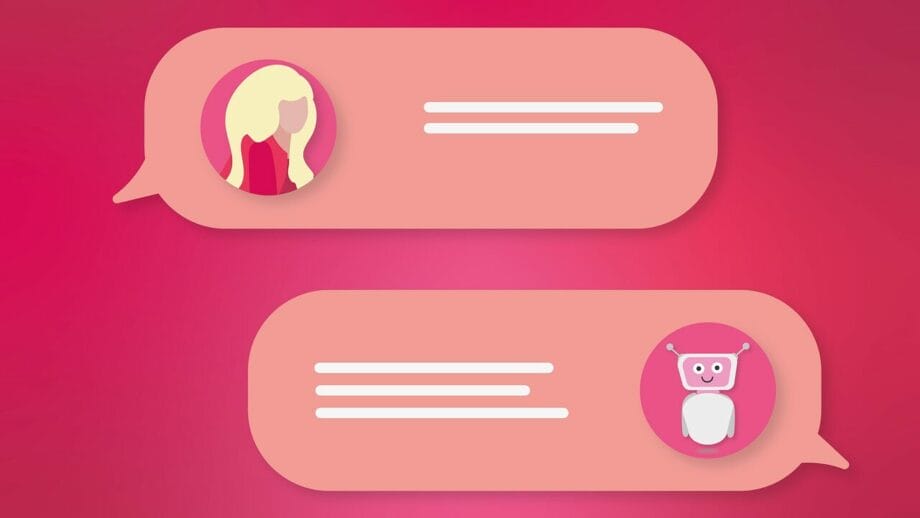While ChatGPT has the power to create authoritative text, translate language, and answer questions in a jiff, there will be times you might feel that this artificial intelligence model is not used to its full potential. Here, crafting effective ChatGPT prompts comes into play.
We have revealed the top 7 tricks and tips to unleash the true potential of ChatGPT. Learn them and amaze your readers with top-notch content.
AI tools like ChatGPT have made our lives way easier by minimizing the overall burden. More than 180.5 billion people use ChatGPT around the world. This whopping figure indicates that a massive number of users rely heavily on this AI-powered language model.
Using the effective ChatGPT prompts, you can craft impeccable marketing copies, blog posts, emails, stories, poems, etc. You can type anything into ChatGPT and make it understand what you want.
However, the end result or overall productivity depends on the effectiveness of the ChatGPT prompts you use. Luckily, there are more interesting methods to get valuable results and unleash the true potential of this tool.
No more worries! We have curated 7 tips and tricks for crafting effective ChatGPT prompts. By just adding a few more words and lines, you can generate flawless results and turn this AI tool into your writing partner.
Let’s transform your basic prompts into brilliant ones! But, first, let’s start with the basics!
ChatGPT Basics: Building a Strong Foundation

Developed by OpenAI, ChatGPT is a powerful language AI tool that helps users create different types of texts, scripts, emails, letters, and more. This tool answers users’ questions in a very informative and human-like way. Users can direct ChatGPT to write in a specific style or format such as hilarious, casual, formal, etc.
This tool greatly helps content creators in creating outlines or summarizing text. Although you will find the best ChatGPT alternatives online, it has a massive user base and flourishing community.
To make the most of ChatGPT, you need to optimize your prompts. Here is a list of some fundamental strategies to craft effective prompts and get the best output.
- Context: You should provide relevant background information or specific details on a topic you need help with. This will direct ChatGPT to better understand your needs, providing better results.
- Clear & Concise: Your prompts should be more clear and concise. This eliminates confusion and misinterpretation. So, be clear, concise, and specific.
- Examples: You can guide ChatGPT with the help of relevant examples. Include examples of the desired format or style in the prompt to provide a reference point to this tool.
- Accuracy: The data that ChatGPT provides might not be current, you need to use specific dates or recent events to get more accurate or current information.
- Questions: You need to structure your questions logically if you have multiple. Don’t just instruct it, include questions in your prompts to get a more informative and engaging response.
- Feedback: If the response provided by ChatGPT is too complex, you can put your feedback in the box. You can simply type ‘simplify this data or explanation’.
- Tone: You can guide ChatGPT to respond in a specific voice, tone, or style. Use descriptive and clear words to get a response in the desired tone. For example, an informative and user-friendly blog post tone will have a different tone than a formal press release.
Now, that you are thorough with the basic fundamentals of using this AI tool, let’s take a quick look at the top tricks for crafting effective ChatGPT prompts.
Tricks for Crafting Effective ChatGPT Prompts

ChatGPT is undeniably a powerful language AI tool but it works best when you know the right methods to use it. To get the most out of this tool, you need to create effective prompts. Here are the top 7 tricks to transform basic prompts into great ones.
1. Conversational Language
Using conversational language in ChatGPT prompts is all about opting for a natural way of communicating, and skipping robotic or formal tones. It helps make the interaction friendly and more interactive.
Including conversational language in prompts allows users to express their intent more effectively such as sarcasm, humor, urgency, or more. For example, a formal tone would be ‘write a business proposal’. Whereas, conversational would be ‘Hey ChatGPT, create an impeccable business proposal that will attract more investors’.
Conversational prompts provide more context to the ChatGPT and guide it to generate desired results. It allows you to get more effective and engaging results via natural collaboration.
2. Breaking Down Complex Tasks
You should avoid filling in too much information in a single prompt as it becomes overwhelming for ChatGPT to digest and handle loads of information. As a result, the outcome will not cater to your expectations.
Consider breaking complex tasks into specific and small steps. When you put small and simple tasks for ChatGPT, it provides clearer and more accurate information. It is just like building a house, you will lay its foundation first before going for the roof.
For example, instead of writing ‘write a comprehensive plan for marketing and launching a fitness app’, you can use the prompt ‘outline a marketing strategy to promote a fitness app on social media platforms’.
By breaking down complex tasks, you create a step-by-step guide for this AI tool which provides a roadmap to follow and connect with the previous tasks. Focused ChatGPT prompts minimize misinterpretation and offer more accurate results on specific tasks.
3. Quotation Marks
Using quotation marks in your ChatGPT prompts is another method to get the desired results. Quotation marks guide this AI tool to understand what you are trying to say. It helps ChatGPT to treat the quoted phrases specifically as a single unit.
For example, ‘write a blog post about mental health apps’ is an unclear prompt. Whereas ‘write a blog post about benefits of mental health apps’ is a prompt improvised with quotation marks.
Here, with the help of quotation marks, you are guiding ChatGPT to focus more on the benefits of mental health apps rather than just providing a basic overview of these apps.

4. Actionable Words
To create effective ChatGPT prompts, you should begin your sentence with an actionable word. Using focused and clear sets of words directs ChatGPT to create, write, summarize, or explain a topic clearly. This eliminates ambiguity and helps this AI tool to provide relevant and accurate responses to the tasks.
For example, ‘Describe artificial intelligence’ will not produce an informative response. Whereas ‘explain the term artificial intelligence in simple language’ is likely to generate concise and relevative responses.
5. Fact-Checking
Although ChatGPT is a powerful writing tool, it is crucial to understand that it is still in the development stage. Therefore, it requires fact-checking and editing in a few steps especially when you are writing on topics such as current events, history, or science. This AI tool is trained on huge amounts of data but there are chances of inaccuracies.
To maintain credibility, you are required to double-check dates, statistics, facts, and names. ChatGPT sometimes produces ambiguous or wordy results. You need to find those areas where some unclear phrases can be removed or refined.
Although this AI tool has impeccable language skills, it can still make grammatical errors. Proofread carefully to figure out weird sentence structures, typos, spelling mistakes, errors, etc. to maintain professionalism. Remove unnecessary phrases, and redundancies, and fine-tune the sentence structure.
6. Word Count
To get the most out of this creative AI tool, you should specify the required word count for a task. For example, if you are generating social media posts, you need to specify the length of your requirements. Similarly, for product descriptions, emails, summaries, etc. you require shorter phrases or sentences.
Include the desired number of words in your ChatGPT prompt like ‘write a product description of new hair shampoo in 100-120 words’. Once you get results, you can give further instructions like ‘this is a bit long, write even shorter’.
Additionally, if the generated word count exceeds the required limits, edit the prompt. For example, instead of ‘write a story of a robot that falls in love with a human’, try ‘describe the turning point in the robot and human love story in 400 words’.
7. Follow-up Prompts
ChatGPT follow-up prompts are a great way to enhance the final output. The first response that you get from this tool is not always perfect but you can improve it further with the help of follow-up prompts like ‘It is good but the tone is very formal change it to a more conversational and friendly style’.
Using this prompt, you can refine ChatGPT’s response. If you are not happy with the conclusion, you can simply say the end part seems rushed, expand it, and provide a descriptive closure. Such prompts help ChatGPT to improve specific areas and give more relevant responses.
Also, once you start interacting with ChatGPT, you may develop new ideas. You can share them with this AI tool. Adding a new range of information enables ChatGPT to give richer and more relevant responses.
Concluding Thoughts

ChatGPT prompts are like a map that guides this AI tool in providing desired responses. A well-crafted prompt gives clear instructions, sets the tone, and guides ChatGPT to provide exceptional results.
With all the information, you can unlock the potential of this AI tool to the fullest. Get ready to create impeccable results collaboratively with ChatGPT!





